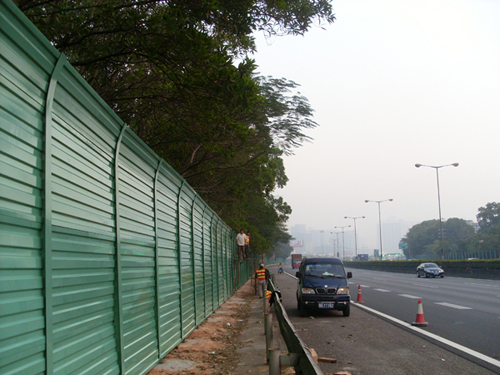- E-mail: sales3@jinbiaofences.com
- Tel: +86 138 3312 9670
- Fax: +86 311 8512 6158
- Add.: INDUSTRIAL PARK EAST ZONE, ANPING COUNTY (WEI ER ROAD 27),HENGSHUI, HEBEI, CHINA.

1. The rust removal and anticorrosive treatment of the noise barrier columns and screens shall meet the requirements of the design and relevant regulations, and shall comply with the relevant provisions of the "Technical Conditions for Anticorrosion of Steel Structures for Expressway Traffic Engineering" (GB / T18226).2. Before entering the hot-dip galvanizing of the sound barrier member, the member should be electrolytically pickled to make the base metal surface clean.3. Steel structural parts of noise barriers should be surface anticorrosive treated by hot-dip galvanizing and plastic spraying after galvanizing.4. Hot-dip galvanizing treatment: The zinc used for hot-dip galvanizing should not be lower than the special No. 1 and No. 1 zinc ingot specified in "Zinc Ingot" (GB / T470). 
The plating amount of the zinc layer should not be less than 610g / m2, and the average thickness of the zinc layer should not be less than 85um.5.Plastic coating after galvanizing of the noise barrier: The zinc ingot used for galvanizing (inner layer) has the same requirements as the hot-dip galvanizing treatment. Below 61um. Non-metallic coating thickness: polyvinyl chloride, polyethylene should not be less than 0.25mm, polyester should not be less than 0.076mm.6. The anti-corrosion treatment of the noise barrier should be performed after the component processing is completed and the inspection is qualified. When the component after the anti-corrosion processing is processed again, the processed surface should be anti-corrosive.
Copyright © Hebei Jinbiao Construction Materials Tech Corp., Ltd.
Technical Support: 